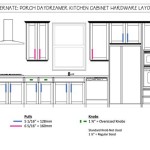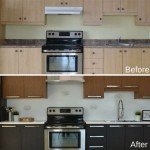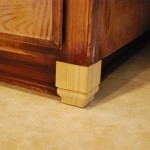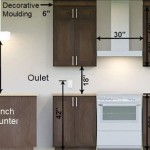Environmentally Friendly Kitchen Cabinets: A Guide to Sustainable Choices
Kitchen renovations are a significant investment, both financially and environmentally. Choosing eco-friendly kitchen cabinets minimizes the impact on the planet while creating a healthy and stylish kitchen. This involves considering materials, manufacturing processes, and the overall lifecycle of the cabinetry.
Sustainable Materials: The Foundation of Eco-Friendly Cabinets
The core of any environmentally sound kitchen cabinet lies in the materials used in its construction. Opting for sustainable materials ensures responsible sourcing and minimizes the depletion of natural resources. Several options stand out in this regard.
Bamboo: A rapidly renewable resource, bamboo reaches maturity much faster than traditional hardwoods, making it a highly sustainable choice. Its strength and durability make it well-suited for cabinet construction.
Reclaimed Wood: Utilizing reclaimed wood from old barns, factories, or other structures diverts waste from landfills and gives new life to existing materials. This choice offers unique character and reduces the demand for newly harvested lumber.
FSC-Certified Wood: The Forest Stewardship Council (FSC) certification signifies that the wood used comes from responsibly managed forests that adhere to strict environmental and social standards. Looking for this certification ensures that the wood has been harvested sustainably.
Wheatboard: This innovative material utilizes agricultural waste, specifically wheat straw, as a primary component. By using a byproduct that would otherwise be discarded, wheatboard minimizes waste and reduces reliance on traditional wood sources.
Eco-Conscious Manufacturing Processes: Minimizing Environmental Impact
Beyond the materials themselves, the manufacturing processes employed in cabinet production play a crucial role in their overall environmental impact. Sustainable manufacturing prioritizes minimizing waste, reducing emissions, and conserving energy.
Low-VOC Finishes: Volatile organic compounds (VOCs) are chemicals released from certain paints, stains, and sealants. These compounds can contribute to poor indoor air quality. Opting for low-VOC or zero-VOC finishes minimizes these harmful emissions and creates a healthier home environment.
Formaldehyde-Free Adhesives: Formaldehyde is a common adhesive used in cabinet construction, but it can release harmful gases. Choosing cabinets made with formaldehyde-free adhesives, such as soy-based or water-based glues, significantly reduces indoor air pollution.
Efficient Manufacturing Practices: Manufacturers committed to sustainability often employ practices that minimize waste generation and optimize energy consumption throughout the production process. Look for companies that prioritize waste reduction and utilize renewable energy sources.
Local Sourcing: Choosing cabinets manufactured locally reduces transportation distances, lowering fuel consumption and greenhouse gas emissions associated with shipping.
Durability and Longevity: Reducing the Need for Replacement
The lifespan of kitchen cabinets significantly impacts their overall environmental footprint. Cabinets built to last reduce the need for frequent replacements, conserving resources and minimizing waste.
High-Quality Construction: Investing in well-constructed cabinets, regardless of the material, ensures longevity. Look for features like solid wood joinery (dovetail or mortise and tenon) instead of staples or nails, which can loosen over time.
Proper Installation: Correct installation is crucial for maximizing the lifespan of cabinets. Properly installed cabinets are less likely to warp, sag, or experience other issues that could necessitate premature replacement.
Timeless Design: Opting for a classic and timeless design reduces the temptation to replace cabinets solely for aesthetic reasons. Choosing a style that will endure trends minimizes the consumption of resources associated with frequent renovations.
Easy Maintenance and Repair: Cabinets that are easy to clean, maintain, and repair can extend their lifespan considerably. Choosing durable finishes and readily available replacement parts simplifies upkeep and reduces the likelihood of needing to replace entire units due to minor damage.
By carefully considering the materials, manufacturing processes, and overall durability of kitchen cabinets, homeowners can make environmentally responsible choices that contribute to a healthier planet and a more sustainable home.

Eco Friendly Kitchen Ideas

Earth Friendly And Sustainable Kitchen Ideas Designcafe

5 Stunning Eco Friendly Kitchen Cabinets Styles Benefits

8 Eco Friendly Kitchen Cabinet Companies Daybring

8 Eco Friendly Kitchen Cabinet Companies Daybring

14 Green Kitchen Cabinet Ideas 2024 Top Paint Colors For Kitchens

5 Stunning Eco Friendly Kitchen Cabinets Styles Benefits

Sustainable And Eco Friendly Kitchen Cabinet Refacing

Environmentally Friendly Kitchen Materials

How To Design An Eco Friendly Kitchen Extra Space Storage
Related Posts








